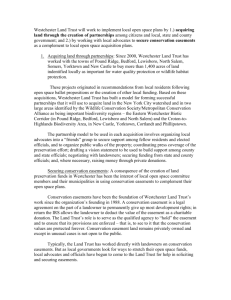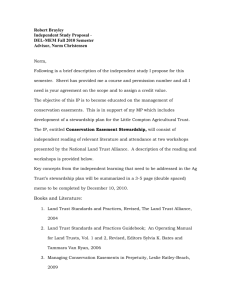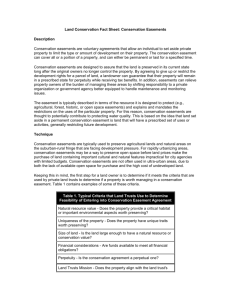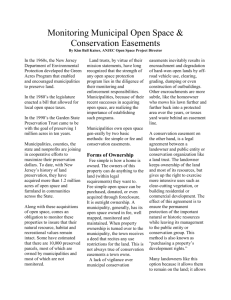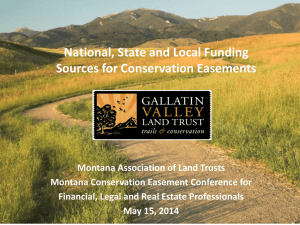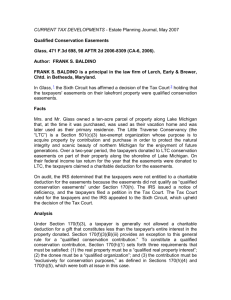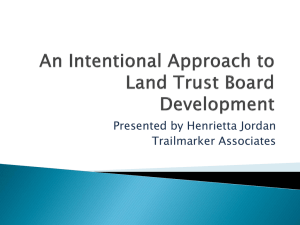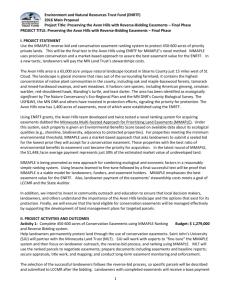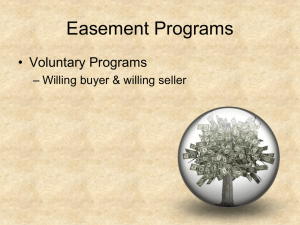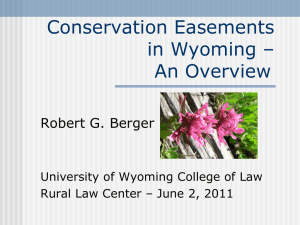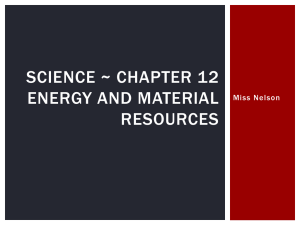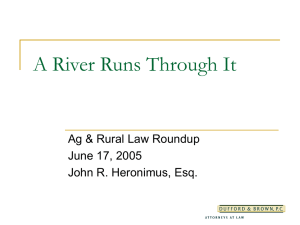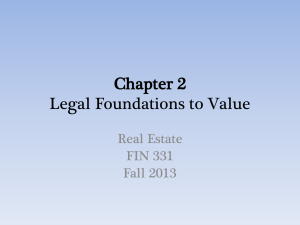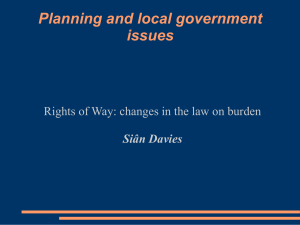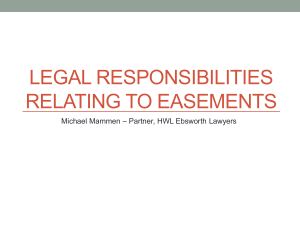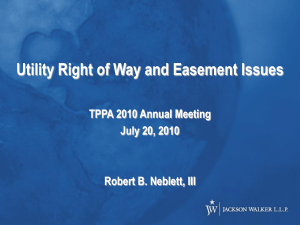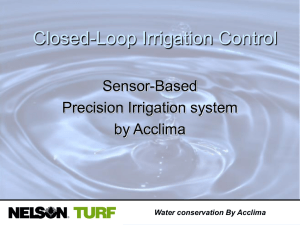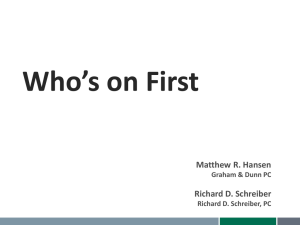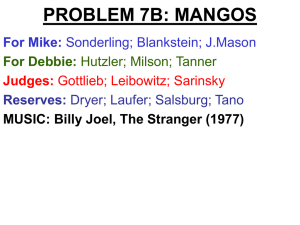CONSERVATION EASEMENT VALUATION IN COLORADO
advertisement
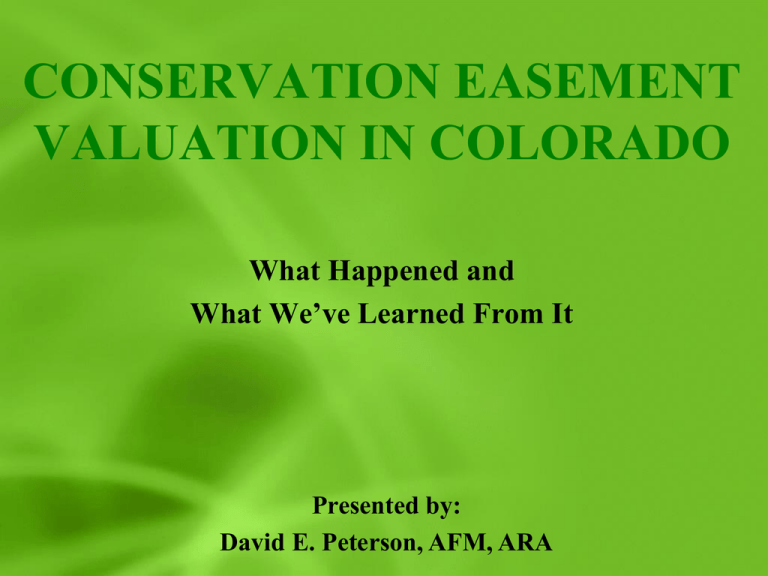
CONSERVATION EASEMENT VALUATION IN COLORADO What Happened and What We’ve Learned From It Presented by: David E. Peterson, AFM, ARA Why Colorado? Strong Preservation Attitudes ▪ Voters have approved tax increases, primarily sales taxes, for outright purchases of land, and for the purchase of Conservation Easements on other lands. ▪ All counties along the State’s Front Range from the Wyoming line through Colorado Springs have sales tax funded Open Space purchase programs. ▪ Pitkin County (Aspen) and Routt County (Steamboat Springs) also have tax funded programs for purchase of land and Conservation Easements. Normal IRS Charitable Donations Transferable Tax Credits ▪ First legislation passed in 1999-2000. ▪ Most significant factor in this legislation is Transferability. ▪ Tax Credit is currently 50% of the value of the Conservation Easement up to $750,000 ($375,000). Amount of tax credit has grown from a maximum of $100,000 in 2000 to $375,000 today. Normal IRS Charitable Donations Transferable Tax Credits ▪ Tax Credit Broker system established (landowner receives about 82%). ▪ State has imposed a limit of $22,000,000 for 2011, 2012, and 2013 on a first come-first served basis. ▪ Previous 3 year’s credits allowed averaged about $50 million per year. ▪ Remainder of value beyond the Tax Credit can be used for normal charitable donation purposes. Great Outdoors Colorado ▪ GOCO receives one-half of State’s share of lottery funding to be used for parks, park improvements, and open space purchases, including help with funding to purchase Conservation Easements. Results of the Legislation ▪ Land Trusts that helped promote invalid easements are no longer in business. ▪ “Rogue” appraisers lost licenses, and were “fined.” ▪ Number of appraisers willing to do Conservation Easements reduced significantly. Results of the Legislation (cont.) ▪ Land Trust organizations must be certified by the State. ▪ Advent of “Phased” Easements to take maximum advantages of Tax Credits. Results of the Legislation (cont.) ▪ Perfect Storm” - IRS was looking for opportunity to crack down on Conservation Easements. Sent a team of “experts” to Colorado to audit returns that included donations of Conservation Easements. ▸ Dreamed up “Matrix” of sales that showed Conservation Easements had no value. ▸ Tax Court ruled they had to provide details of the Matrix to attorneys in one case. Attorneys bound by confidentiality, but the Matrix has disappeared. ▪ 2010-2011 Legislation allows taxpayers whose Tax Credits were denied a method of appealing through the courts. Effects of Legislation ▪ Every Conservation Easement appraisal must be submitted to the Colorado Division of Real Estate with a fee to cover their costs for reviews and operation of their department (started at $520 per appraisal -now reduced to $100 per appraisal). Reviewer’s opinions not always in agreement with others. But we operate under the “Golden Rule”. He who has the gold rules. ▪ Additional Conservation Easement appraisal education required, including a one-day session given by the State. Appraisers must take it every two years. Effects of Legislation (cont.) ▪ Affidavits (4 pages) required with each appraisal swearing to competence and education. ▪ Every Land Trust organization in the State must be certified in order to hold an Easement. Seven out of over 40 declined to become certified. Some are good organizations who now just put easements together, but arrange for them to be held by other land trusts. The “rogue” land trusts are out of business. Remaining land trusts and governmental organizations now scrutinizing appraisals much more closely. Effects of Legislation (cont.) ▪ Advent of “Phased” easements to take maximum advantage of Tax Credits. Effects of Legislation (cont.) ▪ Added levels of reviews of all Conservation Easement appraisals. ▸ Attorneys for clients ▸ Land Trust and/or Purchaser of the Easement, or more likely, both. ▸ Tax Credit Broker ▸ State Division of Real Estate ▸ IRS What Went Wrong? ▪ Three “bad apple” appraisers prepared about 300 improper appraisals over a 2 year period. ▪ Two “rogue’ land trusts involved. ▪ Most of these landowners sold Tax Credits. What Went Wrong?(cont.) ▪ State Department of Revenue refused to accept them. ▪ Purchasers of Tax Credits demanded return of their money. ▪ Landowners and/or Tax Credit Purchasers left holding the bag. Why and How They Did It ▪ None of us really know why, but we can speculate that it was greed, the “good old boy” syndrome, stupidity, muddied thinking, lack of education, and more likely a combination of some or all of these factors. ▪ Some times it’s hard to tell the dishonest from the simply stupid, but we all thought of two of these appraisers as upstanding members of their communities. These two were both ASFMRA members. How They Did It - “A” Appraiser A valued ranch properties in the “before” condition using a Discounted Cash Flow analysis based on a few sales of 40 acre tracts much closer to a major Front Range City ($1,000 per acre) with all costs of development at 25%, and absorption of two years. This was called “Development Value.” “After” value was determined using typical dry pasture sales in the area with sales prices ranging from $300 to $400 per acre. How They Did It - “A” Results on a 2,500 acre ranch in a County with a declining population and probably no chance of any development in the next 100 years were as follows: Before Value 2,500 Acres @ $750/A ($1,000-$250) = $1,875,000 After Value 2,500 Acres @ $350/A = $ 875,000 Value of Conservation Easement $1,000,000 How They Did It - “B” Appraiser B specialized in valuing land with gravel resources. One appraisal involved an easement on 40 acres of a larger 320 acre parcel of land in eastern Colorado which had been purchased a month prior to the date of value by a family LLC for $500 per acre. On that same date the property was divided into 8 tracts of 40 acres each and “sold” to various family members for the same price of $500 per acre. Small amounts of gravel had been removed from one corner parcel over the years by the County. Test drilling showed about a 30 foot depth of gravel across the 40 acres. How They Did It - “B” The total amount of gravel was estimated from fence line to fence line, and a Discounted Cash Flow Analysis was used to value the property in the “Before” condition (the “Gravel Conservation Easement” value) with an absorption rate spread over 10 years discounted at 5.5%. The analysis produced a value of $17,650 per acre. The “After” value (“Agricultural Value”) used was the sales price of $500 per acre. How They Did It - “B” The results of this appraisal were as follows: “Gravel Conservation Easement” 40 Acres @ $17,650 per Acre = “Agricultural Value” 40 Acres @ $500 per Acre = “Total Development Value” = $ 706,600 $ 20,000 $ 686,000 How They Did It - “C” Appraiser C appraised property for an Attorney who was part of the group that bought and subdivided a ranch 30 miles east of Denver into 35 to 40 acre homesites. The attorney was also the founder and operator of the Land Trust that held the Conservation Easements. Sites were sold to insiders at inflated values, with large mortgages carried by the seller. Each owner of a 35 acre site put an Easement on it that eliminated all building envelopes and all division. The Tax Credit to be received by each owner exceeded the total original cost of the land. The owners ended up with a large tract of land with an intermittent stream through it that they all can use for hunting pheasants. What We’ve Learned ▪ Don’t do Conservation Easement appraisals unless you are totally competent. One 1 week course in Conservation Easement valuation will most likely not make you competent. ▪ Every reviewer including the State, has a different interpretation of USPAP, UASFLA, and IRS regulations. ▪ Classes tell us to get legal help from client’s attorneys. Most know less than we do. Only attorneys specializing in Conservation Easements can really be of assistance, and the landowner doesn’t want to pay them. What We’ve Learned (cont.) ▪ Try to work with reviewers from the start if at all possible. This doesn’t work with the State and IRS though. ▪ These aren’t simple appraisals. Charge what you’re worth. What We’ve Learned (cont.) ▪ Areas causing most concern: ▸ 1.Determination of Contiguous Owned Parcel/Larger Parcel. ▸ 2.Using methods to determine after value acceptable to all users (or reviewers). ▸ 3.Effect on value of retention of water rights. ▸ 4.Lack of sales, especially eased sales. What We’ve Learned (cont.) ▪ Areas causing most concern: ▸ 5. Your Proposal/Engagement Letter can almost never be complete enough. ▸ 6.Sometimes you need to train your reviewer. ▸ 7.Develop a strong network of qualified attorneys, land trust experts, and other qualified appraisers. What We’ve Learned (cont.) ▪ Areas causing most concern: ▸ 8. Phased Easements create a whole new “can of worms.” – a.May require two appraisals if one is for bargain sale of CE and one is for donation. – b.Cost basis on part or all of the property. – c.Different land types with CE on just one land type. – d.Allocation of value. – e.Access to encumbered parcel. – f.Clients believe second and following appraisals will be less costly because “you’ve already done all the work.” ▸ 9.Properties that have entitlements in place for development of part or all the property. Affidavit Affidavit Affidavit Affidavit Presented By: David E. Peterson, AFM, ARA
